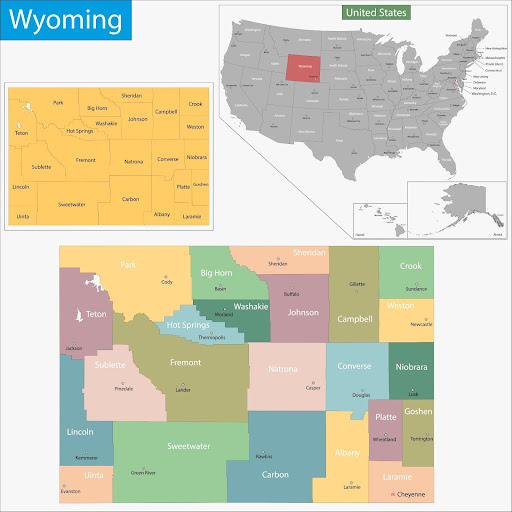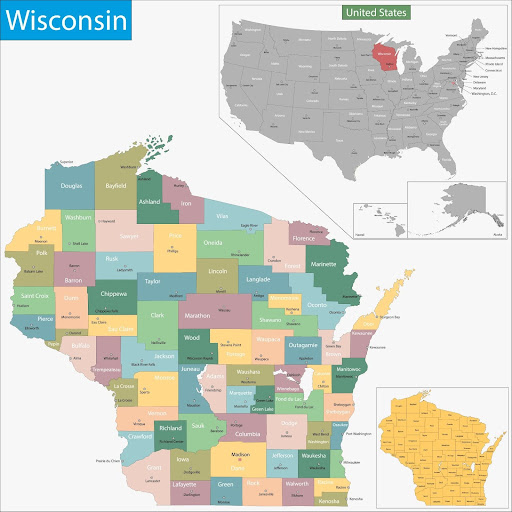Table of Contents
North Dakota may not carry the wildfire reputation of the West, but out here, it’s the wind you need to watch. Fires in North Dakota are running across pastures, through stubble, or into the shelterbelts before the second engine arrives. For fire investigators, that means fast scene turnover, agricultural ignition sources, and a rural response system that varies widely by county.
This guide on wildland fire resources in North Dakota was built to help you work smarter, covering everything from live fire maps to North Dakota’s wildfire response structure, training hubs, and agency responsibilities.
Explore our wildland firefighting resources guide for deeper info.
Live Incident Updates & Maps
Monitor active wildfires and red flag conditions in North Dakota here:
State Overview
Wildland fire in North Dakota doesn’t follow forest logic. It’s mostly grass and wind—and a lot of both.
- Western Badlands: Rugged terrain, steep buttes, and fast-changing wind corridors. Fires here can be lightning-driven or equipment-related and often span public and tribal land.
- Central Prairie: Open cropland and hayfields dominate. Agricultural burns and equipment fires are the most common ignition sources.
- Eastern Red River Valley: Wetter, but not immune. Dry spring winds and grass fuels still present a seasonal risk.
- Tribal Lands: Several large reservations cross North Dakota, including Standing Rock, Spirit Lake, and Fort Berthold. Investigators must coordinate across tribal, federal, and state agencies.
- WUI Zones: Small towns surrounded by pasture or woodland edges require special attention. Fires that start out rural often end up threatening homes.
Wildfire Season Timeline
Fire season in North Dakota runs shorter than in western states, but it hits hard when conditions align.
- Spring (March–May): Peak fire season. Dry grasses, high winds, and open burns combine for fast-moving fires. Investigators should expect debris-related starts and agricultural misfires.
- Late Summer (August–September): A secondary spike. After crop harvest, stubble burns and haystack fires are common.
- Fall (October–November): Fewer starts, but increased red flag events due to low RH and harvest machinery use.
- Winter Fires: Rare, but possible in windy, snow-free stretches. Frozen fuels and deep snow drifts complicate suppression and scene access.
Key State Agencies Involved
North Dakota Forest Service (NDFS): Manages fire prevention, suppression, and investigation on state and private forested lands. Investigators often coordinate with NDFS for training, dispatch, and fire reporting.
North Dakota Department of Emergency Services (DES): Handles coordination of large incidents and mutual aid, including IMT deployment and support for rural counties overwhelmed by scale or complexity.
North Dakota Department of Agriculture (Burn Permit System): Controls open burn registration, agricultural burn guidance, and debris fire policy. Fire investigators frequently reference their records when tracking potential sources.
Tribal Fire Programs: Tribal fire departments and BIA fire crews manage suppression and investigation on reservations. Cooperation between tribal, state, and federal investigators is often required.
Federal Agencies – USFS & BLM: Limited federal land in ND, but where it exists (especially in the west), BLM and USFS support suppression and joint investigations. LEI (Law Enforcement and Investigations) involvement is standard.
Local Wildland Firefighting Resources
Initial attack is primarily local. County fire departments, mostly volunteer, serve as first responders. Mutual aid and NDFS support are layered in as fire size or complexity increases. Many small departments have limited wildland equipment but deep regional knowledge.
List of Local/State/Federal Fire Response Agencies
County & Local Fire Departments (VFDs): North Dakota has many VFDs statewide. Most are rural, with wildland response experience but limited investigative documentation. These departments are often first on the scene.
North Dakota Forest Service Districts: NDFS districts include fire management officers, field investigators, and support crews. Investigators should coordinate closely for equipment records, fire reports, and training access.
Tribal Fire Services: Each reservation operates its own suppression and investigation units, often supported by the Bureau of Indian Affairs. Coordination protocols vary by tribe.
County Emergency Managers: Serve as local incident command support and dispatch coordination. Many help manage initial suppression resources and can provide critical information during and after incidents.
Contact Numbers and Emergency Links
- To Report a Wildfire: Dial 911
- ND Forest Service Wildfire Resources: https://www.ndsu.edu/ndfs/fire_management
- ND Response Wildfire Dashboard: https://www.ndresponse.gov/fire-danger
- Burn Permits and Guidelines: https://www.nd.gov/ndda
- Northern Rockies Coordination Center (NRCC): 406-329-4880 | https://gacc.nifc.gov/nrcc
Training & Volunteering
North Dakota’s wildland fire training network is smaller than many western states but growing. Investigators can access NWCG-aligned courses through the Forest Service, BIA, and regional academies.
NWCG-Approved Academies and Centers
Northern Plains Wildfire Academy (NPWA): Held annually at Bismarck State College. Offers S-130/190, L-280, and FI-210. Attracts fire personnel from across the Northern Rockies and Great Plains.
North Dakota Forest Service Training Division: Provides seasonal fire training, online coursework, and field exercises. Investigators can join workshops on cause and origin determination and incident documentation.
BIA and Tribal Fire Programs: Offer investigator shadow opportunities and field-based courses for those working frequently on or near tribal land.
Volunteer and Seasonal Training Opportunities
Emergency Firefighter (EFF) Program: NDFS hires and trains seasonal firefighters, many of whom support suppression mop-up and help protect fire origin scenes.
VFD Wildland Certification Tracks: Many volunteer departments partner with NDFS or NPWA for red card training and equipment access. Investigators often collaborate with these departments post-incident.
County-Based Fire Schools: Short-format weekend training events held in spring and fall. A good place for investigators to build local relationships and practice joint ICS scenarios.
Stay Informed on North Dakota’s Wildland Fire Landscape
Fires here don’t give you much time to think. When the winds pick up and visibility drops to nothing, everything hinges on your prep—your maps, your contacts, your ability to get to a scene fast and document what matters before it’s gone.
As the state sees warmer springs and more prescribed fire on working lands, investigators will need to keep pace. Learn the agricultural context. Build relationships with tribal fire officers. And stay nimble. Prairie fire doesn’t play by forest rules—and neither should your investigation toolkit.
FAQs
How do I report a wildfire in North Dakota?
Dial 911. For non-emergency updates, refer to NDResponse.gov or contact your county emergency manager.
Who investigates wildfires in North Dakota?
NDFS investigates on state and private land, often in coordination with local VFDs. Fires on tribal or federal land are investigated by tribal fire officers, the BIA, or federal agencies.
Can I burn brush or stubble in North Dakota?
Yes, with a permit. Agricultural burns must be registered through the Department of Agriculture’s online system. Local fire bans or red flag warnings may override permits.










